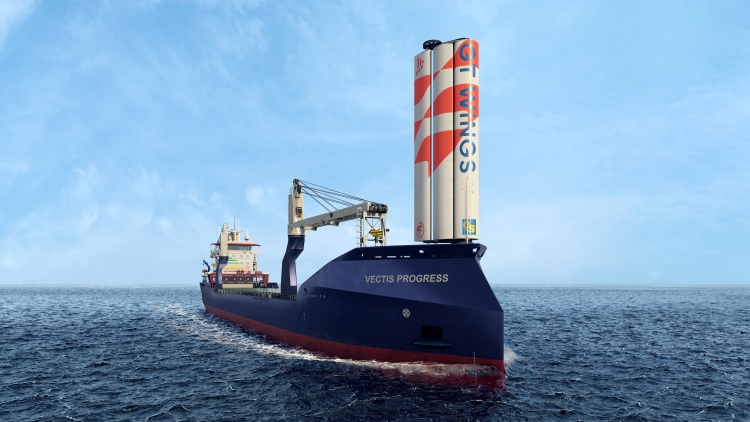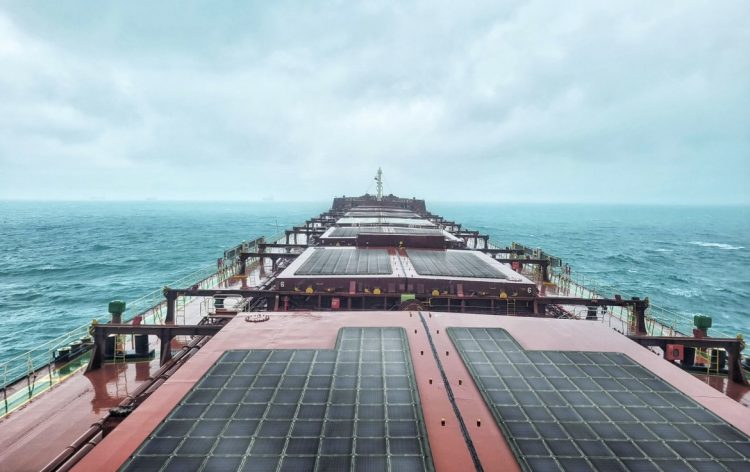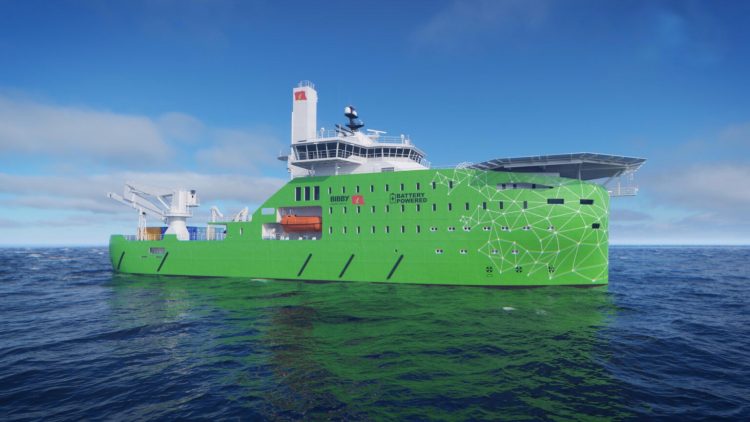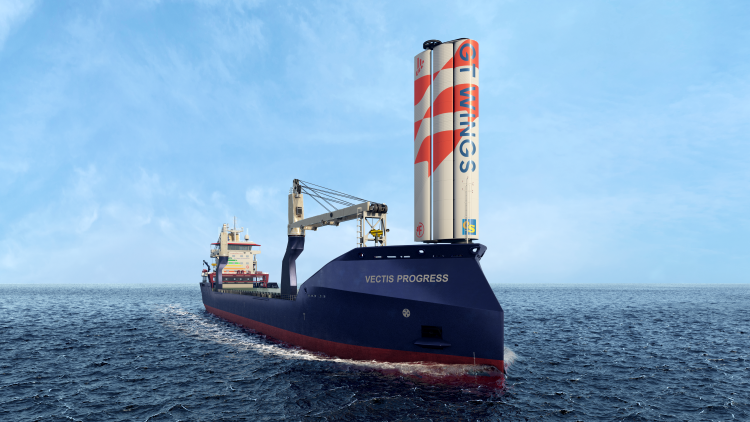At the Mersey Maritime Navigating Maritime Innovation summit in Liverpool four maritime firms explain how they are pioneering the latest advances in net zero shipping using batteries, ethanol, solar and wind. Tony McDonough reports

Without the thousands of ships that criss-cross the oceans every day, vital supplies of food, medicines, clothes and other goods would never reach us.
Shipping routes are the lifelines to a fully functioning society and the arteries of the global economy. And given the size and scale of the world’s maritime sector it is remarkable that shipping accounts for just 3% of all human CO2 emissions.
Nonetheless the industry has made a full-blooded commitment to decarbonise its operations and reach net zero by 2050. It is a huge undertaking and one that requires significant investment and major step changes in innovation.
This was the focus of the Maritime Innovation Summit organised by industry cluster organisation, Mersey Maritime, as part of its Department for Transport and industry backed; Navigating Maritime Innovation in the Liverpool City Region project.
Held at Liverpool John Moores University’s (LJMU) Student Life building the one-day event brought together maritime industry leaders, academics and local government.
Opening the summit was Mersey Maritime chief executive Ruth Wood. LJMU Vice Chancellor, and CEO, Professor Mark Power then delivered the keynote speech.
He said: “Through the Navigating Maritime Innovation Project, and in collaboration with Mersey Maritime – we are able to achieve greater joined-up thinking and action by researchers, civic bodies and businesses.
“This collaboration is driving innovation across the LCR maritime cluster that covers areas including commercial shipping, transport, alternative fuels, vessel design and future skills.
“Today’s summit is about ideas, action and impact. It’s about showcasing what happens when academia, industry, and civic partners come together to solve the big challenges facing our maritime economy and look forward to what comes next.”
Prof Power was followed by Paul Tallon, innovation manager at Mersey Maritime, who talked about Navigating Maritime Innovation in the Liverpool City Region project.
Paul detailed how an industry wide survey and focused industry engagement effort would now be undertaken focused on maritime innovation in the region.
Key assets will be mapped, industry challenges identified, and future opportunities highlighted for collaborative working and investment across the whole breadth of the maritime sector in the region.
There then followed three sessions, the first of which focused on ‘maritime innovation opportunities’; hearing from Liverpool City Region Combined Authority, LCR Freeport and the Royal Academy of Engineering, the second session included presentations on academic activity around maritime innovation from LJMU and University of Liverpool.
READ MORE: Plans for £35m cement terminal at Port of Liverpool
READ MORE: CLdN increases Liverpool to Dublin capacity by 25%
In the final and third session four companies – shipping giant Maersk, one of Liverpool’s oldest businesses; Bibby Marine, and start-ups Grafmarine and GT Wings – all contributed to the Maritime Industry Innovation Showcase.
This quartet demonstrated how they had gone beyond theory and had taken their pioneering plans to decarbonise onto the sea for real:
Martin Leigh, founder of Grafmarine
Experts suggest that solar will become the dominant source of renewable energy as the 21st century advances. Grafmarine is looking to harness the power of the sun to advance net zero shipping.
It has developed high-tech solar tiles that Martin claims are suitable for installation on more than 70,000 ships around the world. Its NanoDeck invention transforms any flat surface into a platform for generating and storing energy.
Its patented modular AI solar energy system provides a highly durable and integrated power management system. Its plug-and-play, solid-state system can be optimised to meet individual vessel energy usage profiles and can generate capacity up to 150kw.
“There is no one magic bullet to get to net zero,” said Martin. “We are one of several solutions. We are just one generation away from the net zero target of 2050 so the shipping industry has difficult decisions to make.
“What we have developed is future-proof and reduces fuel consumption and operational costs. We estimate it can save up to 10% of fuel. It is not just a solar tile. Our IP is in the electronics and how we manage the energy and use it efficiently.”
Martin says the firm is now looking for “strategic partners” to take its venture onto the next level and “gain the confidence of the shipping industry”.

Martin Harrop, product director at GT Wings
Most people think that wind-propelled ships are so 19th century but wait long enough and things eventually come back into fashion. GT Wings is pioneering tech that thankfully won’t see sailors climbing the rigging again but will save CO2.
Aircraft wings are designed to use air flow to generate lift. GT Wings ‘wings’, once fitted upright to a ship and rising to 20m, operate on the same principle but instead use the wind to generate thrust. This allows vessels to reduce engine power, saving fuel and reducing their emissions.
Martin says the venture is now looking to move from “start-up to scale-up”. GT Wings demonstrator has now been tested across four Transatlantic voyages and the business is now ready to step up its efforts.
“We are now at the stage where we want to step up into commercial sales,” said Martin. “What we do slightly differently is that we are in the area of large -trans ocean – bigger cargo vessels where other technologies struggle.
“Wind is zero emission energy source at the point of use. Our wings can generate significant thrust from a smaller area than our competitors. On average, we expect to achieve around 10% fuel savings over the course of a year—but in favorable wind conditions, savings could reach up to 30%
“We are now looking for a home to do the assembly and installation work. Liverpool would be a fantastic place for that because of its positioning in terms of Transatlantic shipping routes.”

David Browne, director of corporate and social affairs at Maersk Logistics and Services
Maersk is one of the biggest names in global shipping. Vessels and containers bearing its name are a common sight on every ocean and at every major port in the world. It operates around 700 container ships.
“Innovation is in Maersk’s DNA. In 120 years, we have gone from sail to steam, from coal to oil,” said David. “We are now at the latest stage of our continual innovation. Laura Maersk was delivered to us in 2023 and she is the first dual-fuel container ship that can run on methanol.
“She first ran on bio-methanol as that was what was available at the time. We had to work with people to see how we were going to refuel as not many ports offered this. Last week she filled up in Denmark on e-methanol.
“Thanks to the success of ‘Laura’ we have now ordered a further 26 methanol ships which are either on the water or due to be delivered. On the newest ships the accommodation is at the front to get more containers on.
“One of the other ways you make shipping greener is to move more containers for the same fuel burned. Another ship, Maersk Halifax, is an older ship. During her five-year refit in 2024 a robot cut her in half, then the engine was replaced and the size of the hull was increased.
“Now we are collecting data from new builds and from retrofits to improve our knowledge and understanding of how we can continue to improve efficiency on our ships.”
Maersk is also looking to install sails onboard some ships which could save 10% of the fuel. We have connected all our ships with the internet via Starlink. This means we can get data from our new innovations sent back immediately.”

Ewan McMillan, project delivery manager at Bibby Marine
Ewan McMillan, project delivery manager at Bibby Marine
Bibby Line Group is one of Liverpool’s oldest businesses, stretching back more than 200 years. But Bibby Marine, one of its subsidiaries, is looking forward, not back, by pioneering a new net zero offshore support vessel.
Costing tens of millions of pounds, Liverpool firm Bibby Marine is building the world’s first zero-emission offshore wind farm support vessel to be delivered in 2027. Bibby Marine is committed to expanding its fleet and evolving the design.
The eCSOV achieves a 70 percent fuel saving compared to a standard conventional CSOV, which does not factor in the Emissions Trading System(ETS) tax.
Once in operation Bibby says its new eCSOV will support offshore installations such as windfarms, will have the capability to operate solely on battery power for a typical full day of operations, the range of the vessel will allow for passage from field to port and return.
There is certainly a growing demand for offshore support ships. It is estimated more than 850GW of offshore wind capacity will be installed across the world by 2050.
“Design philosophy from the ground up was to be electric with methanol,” Ewan explained. “You can never be fully electric. “There is a 24.4MW battery on board with offshore charging ready.
“The battery will be the primary power source. Because it is first in class it has to be good and silence any critics. The case for an electric vessel is well and truly proven.”

The Innovation Summit also included an exclusive preview of the Liverpool city region’s new ‘Maritime Action Framework’ document, released into the public domain for the first time.
John Whaling, lead officer for innovation and commercialisation, said: “The Liverpool City Region’s Maritime Innovation Action Framework (MIAF), previewed at this excellent Mersey Maritime event, marks a transformative step in re-establishing the region as a global leader in maritime innovation.”
The post Analysis: maritime quartet pioneering net zero shipping appeared first on Liverpool Business News.





